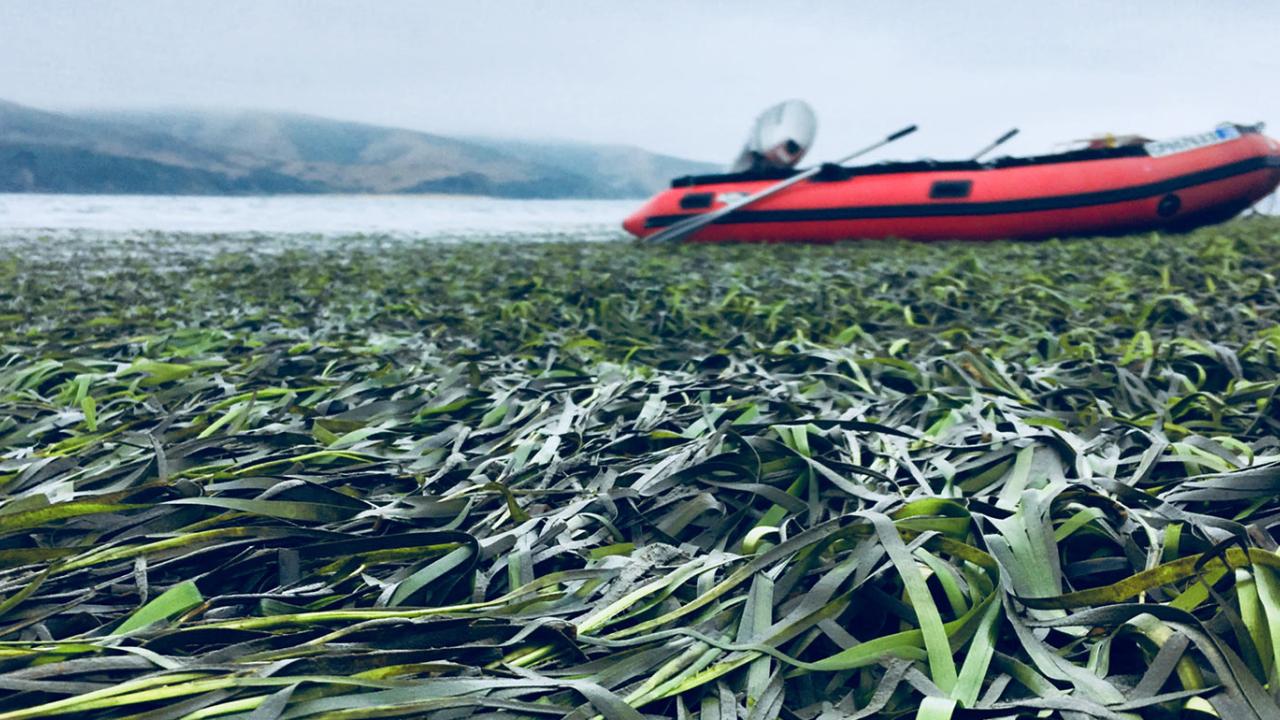Beds of eelgrass (Zostera marina) form an important habitat in coastal regions throughout the northern hemisphere, crucial to many fish and other species and storing vast amounts of carbon. A new study published July 20 in Nature Plants shows that eelgrass spread around the world much more recently than previously thought, just under a quarter-million years ago. The results have implications for how eelgrass could be affected by a changing climate.
An international team, including Professors Jay Stachowicz and Jonathan Eisen at the UC Davis Department of Evolution and Ecology and UC Davis Genome Center, reconstructed the history of eelgrass based on DNA sequences of the plant from around the world. The project was coordinated by Thorsten Reusch, GEOMAR Helmholtz Centre for Ocean Research Kiel, Germany.
Eelgrass is a type of seagrass, descended from freshwater flowering plants that returned to the ocean. Unlike algal seaweeds, seagrasses have roots, shoots and flowers and produce seeds just like other flowering plants, but in seawater.
Eelgrass is known to have originated in the coastal northwest Pacific and then spread throughout the Pacific, Atlantic and Mediterranean.
Spread more recent than thought
The new work shows that eelgrass crossed the Pacific at least twice, likely carried by the North Pacific Current. The plant arrived in the Atlantic ocean through the Canadian Arctic just 243,000 years ago. That is much more recent than previously thought, as most Atlantic species that migrated from the Pacific did so about 3.5 million years ago.
Eelgrass established in the Mediterranean 44,000 years ago, and modern populations on the Atlantic coast date back just 19,000 years to the end of the last glacial maximum, according to the study.
The bottlenecks created by these recent migrations have reduced the genetic diversity of eelgrass in the Atlantic, the researchers found. This could make the species more vulnerable to impacts of climate change and other stressors.
“Warming oceans have already caused losses of seagrass meadows at the southern range limits, in particular North Carolina and southern Portugal. In addition, heat waves have also caused losses in shallow waters in some the northern parts of the distribution,” said Reusch. “This is not good news because seagrass meadows form diverse and productive ecosystems, and no other species is able to take on the role of eelgrass if meadows cannot persist under future conditions.”
One approach to protecting Atlantic eelgrass could be introducing more diversity from Pacific populations. Researchers are now working to develop a reference genome for Pacific eelgrass.
The work was supported in part by a grant to Eisen, Stachowicz and Jeanine Olsen, Groningen Institute for Evolutionary Life Sciences, Groningen, The Netherlands, from the U.S. Department of Energy Joint Genome Institute. Field sampling was supported by a grant from the U.S. National Science Foundation. The Joint Genome Institute is a Department of Energy Office of Science User Facility.
Media Resources
Ocean current patterns drive the worldwide colonization of eelgrass (Zostera marina) (Nature Plants)
How eelgrass spread around the world (GEOMAR news release)
Seagrasses Turn Back the Clock on Ocean Acidification (In Focus: Science and Climate)
